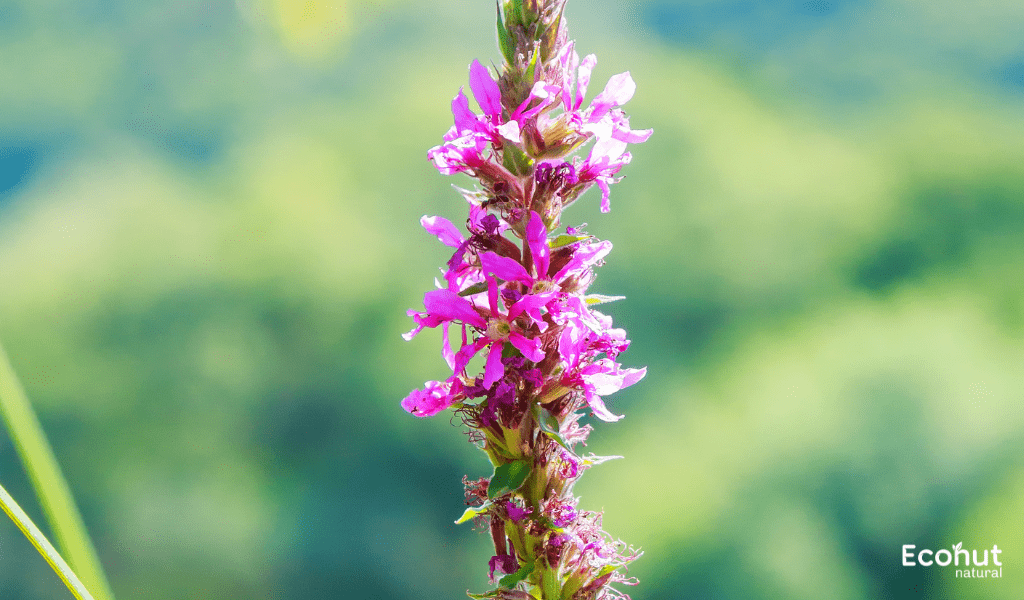Hedysarum pictum, also known as prishniparni, is an upright perennial herb that reaches heights of 0.9 to 1.8 meters. The imparipinnate, 20–30 cm long leaves have 5–9 leaflets. Five to seven linear, oblong leaflets, each 10 to 20 centimeters long, pointed, white-blotched, minutely hairy beneath, and with a rounded base, are present on the upper stem. The leaflets are whole edges, glossy and hairless on top, rough and hairy underneath, and narrowly lanceolate, with a length range of 7 to 25 cm (smaller at the base). They are also frequently variegated.
In Ayurveda, prishniparni is considered to be one of the most important herbs. It belongs to the group of ten herbs known as Dashamoola. People can benefit greatly from this herb’s numerous health benefits. This herb has many benefits, including cardiovascular, expectorant, analgesic, antiseptic, anti-inflammatory, antibacterial, and anti-emetic properties.
Description
This herb has amazing benefits. Every part of the plant has a multitude of therapeutic properties. Numerous phytochemical compounds, such as phenols, alkaloids, flavonoids, steroids, terpenoids, and saponins, are present in this herb. All of these phytochemical compounds are abundant in biological activists that protect the body against numerous chronic diseases.
Botanical Name:
Hedysarum pictum
Family:
Fabaceae
Leaves:
Prishniparni leaves are complex, with five to nine leaflets. The leaflets are green with white spots and have an oblong or lanceolate form. Traditional medicine uses the leaves to treat a range of ailments, such as bleeding, diarrhea, and fever.
Flowers:
Prishniparni flowers are tiny and come in pink, purple, or white hues. At the extremities of the stems, they are grouped densely. Traditional medicine uses the flowers to treat a range of ailments, such as kidney stones, asthma, and cough.
Fruits:
Prishniparni fruits are pods with two to four seeds inside. The hairy, brown pods are rough. Traditional medicine uses the seeds to treat a range of ailments, including as bleeding, diarrhea, and fever.
Seeds:
Prishniparni seeds are kidney-shaped, tiny, and brown. In traditional medicine, they are used to cure a range of ailments, such as bleeding, diarrhea, and fever.
Roots:
Prishniparni’s roots are woody, long, and thin. Their hue ranges from pale yellow to buff, and their flavor is mildly sweet. Traditional medicine uses the roots to treat a range of ailments, including as bleeding, diarrhea, and fever.
Habitat:
It is found in large quantities in the Philippines, Australia, Africa, India, Bangladesh, Sri Lanka, Malay Islands, Tropical Africa, and nearly every region of Asia. It grows in the sub-Himalayan region from Kashmir to west Bengal and Assam, amid dry grasslands and open woods.
Parts Used:
- Roots
Dosage:
- Half – one gram
Chemical Constituents
Numerous phytochemical compounds, such as phenols, alkaloids, flavonoids, steroids, terpenoids, and saponins, are present in this herb. All of these phytochemical compounds are abundant in biological activists that protect the body against numerous chronic diseases.
Other Language Names of Prishniparni (Hedysarum pictum)
Common name – Dabra
Hindi name – Dabra, Pithavan
Sanskrit names – Prishniparni, Prithakparni, kalashi, Dhavani, Guha, Shrugalavinna, Chitraparni, Anghriparni
Tamil name – Sittirappaladai, Kolaponna
Scientific Classification
| Kingdom | Plantae |
| Phylum | Tracheophyta |
| Class | Magnoliopsida |
| Order | Fabales |
| Family | Fabaceae |
| Genus | Uraria |
| Species | picta |
Ayurvedic Properties
Hindi/Sanskrit
- Rasa -Madhura,Tikta
- Guna -Laghu
- Virya -Ushna
- Vipaka -Madhura
English
- Taste – Bitter,Sweet
- Physical Property-Light
- Potency- Hot
- Metabolic Property (After Digestion)-Sweet
Prishniparni (Hedysarum pictum) Uses
- This herb works really well for treating gonorrhea. This herb aids in the management of gonorrhea symptoms such as vaginal pain, painful urination, abdominal pain, pelvic pain, pus-like discharge, and bleeding.
- This herb’s roots have aphrodisiac qualities. It aids in boosting sexual desire and libido. Therefore, using this herb can help you retain your body’s good vitality, stamina, and sexual health.
- The herb’s expectorant qualities work wonders for treating respiratory conditions like bronchitis, asthma, common colds, and coughs. It makes clearing mucus from the pulmonary and nasal passageways easier.
- This herb is an effective malaria treatment.
- Additionally, this herb has antiarrhythmic properties. It helps treat conditions like atrial fibrillation, ventricular tachycardia, and atrial flutter that are caused by abnormal heart rhythms.
Don’t miss: Khurasani Ajwain, Black Henbane (Hyoscyamus Niger) Ayurvedic Properties, Benefits, Dosage & Side Effects
Prishniparni (Hedysarum pictum) Benefits
Respiratory Wellness:
This herb is essential for maintaining good respiratory health. Prishniparni is a useful ally against ailments like cough, bronchitis, and asthma because of its anti-inflammatory and antibacterial properties.
Healthy bones:
The capacity of prishniparni to mend broken bones is among its most significant health advantages. The plant extracts encourage increased calcium deposition and early phosphorus buildup. Therefore, fractures are treated using it.
Digestive Harmony:
Including Uraria pictain your diet can help support a healthy digestive system. The warming qualities and bitter taste of prishniparni encourage Agni, or digestive fire. It promotes overall digestive wellbeing by reducing bloating, indigestion, and other digestive discomforts.
Liver health:
One of the best hepatoprotective herbs is pistisana. It can help mend and safeguard the liver and spleen. This herb’s root extract is used to treat stomach disorders, liver issues, and spleen enlargement.
Reducing fever:
Prishniparni is a great herb to use for fevers of any kind. This herb’s root extracts are used to treat recurrent fevers, chronic fever malaria, and the weakness that goes along with them.
Prishniparni (Hedysarum pictum) Side Effects
Pregnant and breastfeeding:
It is advised to avoid Prishniparni while pregnant or breastfeeding.
Underlying conditions:
If you have any pre-existing medical illnesses, particularly autoimmune diseases, diabetes, or hormonal disorders, speak with a doctor before beginning Prishniparni therapy.
Conclusion
Prishniparni, also known as Uraria picta, is a perennial herb that grows upright.This herb has amazing benefits. Every part of the plant has a multitude of therapeutic properties. Numerous phytochemical compounds, such as phenols, alkaloids, flavonoids, steroids, terpenoids, and saponins, are present in this herb.
FAQS
What is the use of Prishniparni?
Additionally, prishniparni supports cardiovascular health by acting as a cardiac tonic. Respiratory System: Prishniparni is advised in cough, respiratory diseases, and related concerns. It aids in the expulsion of vitiated Kapha dosha. Reproductive System: It helps with oligospermia and has aphrodisiac qualities.
What is the common name for Uraria picta?
Prishniparni
What is the benefit of Uraria picta?
Bone fractures can mend more quickly when the Uraria species is used. It possesses diuretic, expectorant, and anti-inflammatory qualities in addition to being utilized as a cardiac and nervine tonic. One of the components of Ayurvedic “dasamoola” is the plant’s root.

